Today’s Deal: Save 40% on We Were Here Too!*
Look for the deals each day on the front page of Steam. Or follow us on twitter or Facebook for instant notifications wherever you are!
*Offer ends Saturday at 10AM Pacific Time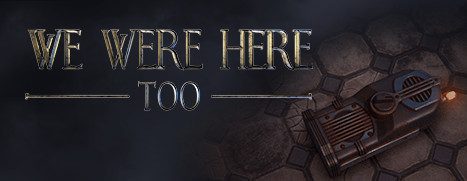 Website: LINK
Website: LINK

Today’s Deal: Save 40% on We Were Here Too!*
Look for the deals each day on the front page of Steam. Or follow us on twitter or Facebook for instant notifications wherever you are!
*Offer ends Saturday at 10AM Pacific Time Website: LINK
Website: LINK
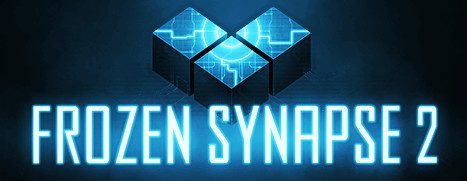
Frozen Synapse 2 is Now Available on Steam!
Frozen Synapse 2 is the sequel to the award-winning turn-based tactical game.
Command your squads in a vast procedurally generated city: enter any building, perform any mission, execute any strategy. Website: LINK
Website: LINK
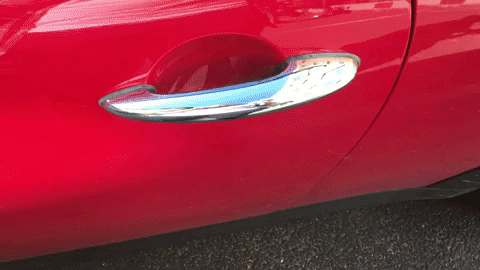
You wouldn’t download a car…but is that just because none of us know how to? And OF COURSE none of us know how to: it’s a really hard thing to do!

Dramatic reenactment using a Mini because, c’mon, as if I can afford a Tesla!
True story. He was also the true father of the electrical age (sorry, not sorry, Edison) and looked so much like David Bowie that here’s David Bowie playing Nikola Tesla:

Not even pigeon love
Which is the perfect segue, as here’s a Tesla playing David Bowie, and here’s also where our story truly begins…
But some people also dislike going to the dentist, so ¯\_(ツ)_/¯. (I also love going to the dentist.)
I’m pretty sure the reason some people have issues with Tesla is that electric cars still seem like a form of magic we’re not quite comfortable with.
Whatever people’s reason for holding a grudge against Tesla, recent findings at a university in Belgium this week have left the tech community aflutter: the academics announced that, with the aid of a “$35 computer”, they can clone your Tesla car key and steal. Your. Car.
If you haven’t guessed yet, we’re the ones behind the $35 computer. (Hi!)
Says WIRED: A team of researchers at the KU Leuven University in Belgium on Monday plan to present a paper at the Cryptographic Hardware and Embedded Systems conference in Amsterdam, revealing a technique for defeating the encryption used in the wireless key fobs of Tesla’s Model S luxury sedans. With about $600 in radio and computing equipment, they can wirelessly read signals from a nearby Tesla owner’s fob. Less than two seconds of computation yields the fob’s cryptographic key, allowing them to steal the associated car without a trace.
When I said that the tech community was all aflutter, what I meant was, on the whole, we find this hack somewhat entertaining but aren’t all that shocked by it. Not because we hate Tesla, but because these things happen. Technology is ever evolving, and that $600 worth of kit can do a thing to another thing isn’t all that unbelievable.
Sweet Cyber Jones on Twitter
The keys to my new Tesla https://t.co/jNViEZBxrB
The academics showed an example of the hack using “just” a couple of radios, a Raspberry Pi, some batteries, and your basic, off-the-shelf “pre-computed table of keys on a portable hard drive”. And through the magic of electric car IoT technology, Tesla instantly released a series of fixes to allow existing Tesla users to protect their cars against the attack, which is all kinds of cool.
Because The Fast and the Furious isn’t real. And I highly doubt there’s a criminal enterprise out there that’s capable of building the same technology as well-funded university researchers.
Yes, this study from KU Leuven University is interesting. And yes, we all had a good laugh at the expense of Tesla and Elon Musk, but we don’t need academics to provide material for that. And I genuinely love Tesla and the work Elon is doing. True love.

Instead, we should be seeing this as a reminder that data encryption and online security are things we all need to take seriously in this digital world. So stop connecting your phone to whatever free WiFi network you can find, stop using PASSWORD123 for all your online accounts, and spend a little more time learning how you can better protect yourself and your family from nasty people on the internet.
And leave Britney Tesla alone!
Website: LINK

World of Warplanes is Now Available on Steam Early Access!
World of Warplanes is an aerial combat MMO action game set in the Golden Age of military aviation. Throwing players into a never-ending battle for dominance of the skies, the game allows aircraft enthusiasts to pursue full-scale careers as virtual pilots, earning their wings in intense 12-vs-12 battles where supremacy in the air depends on not only a fast trigger finger, but also coordinated teamwork.
 Website: LINK
Website: LINK

Today’s Deal: Save 50% on 60 Seconds!!*
Look for the deals each day on the front page of Steam. Or follow us on twitter or Facebook for instant notifications wherever you are!
*Offer ends Friday at 10AM Pacific Time Website: LINK
Website: LINK
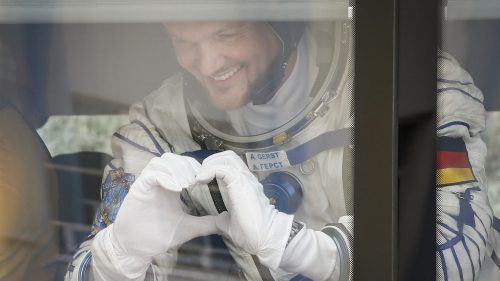
Ever wanted to run your own experiment in space? Then you’re in luck! ESA Education, in collaboration with the Raspberry Pi Foundation, is pleased to announce the launch of the 2018/2019 European Astro Pi Challenge!
Astro Pi returns for a new 2018/19 challenge!
Ever wanted to run your own experiment in space? Then you’re in luck! ESA Education, in collaboration with the Raspberry Pi Foundation, is pleased to announce the launch of the 2018/2019 European Astro Pi Challenge!
In this challenge, we offer students and young people the amazing opportunity to conduct scientific investigations in space by writing computer programs that run on Astro Pis — special Raspberry Pi computers aboard the International Space Station (ISS).

ESA astronaut Alexander Gerst and CSA astronaut David Saint-Jacques are the Challenge’s ambassadors. They will accompany our Astro Pi’s on the ISS and oversee your programs while these run and collect scientific data.
Two missions are part of the Astro Pi Challenge: Mission Zero and Mission Space Lab.
If you are 19 or younger and live in an ESA Member or Associate Member State*, we invite you to form a team with at least one friend of yours and apply to the Astro Pi Challenge’s Mission Space Lab by sending us your experiment idea by the end of October. We can’t wait to see your ideas!
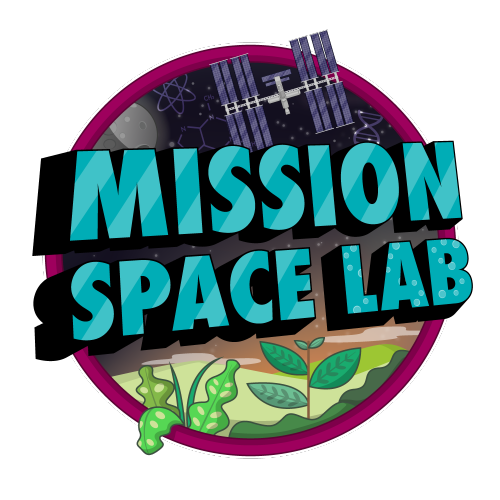
Mission Space Lab gives you the chance to have your scientific experiment run on the ISS. Your challenge is to design and code an experiment using the environmental sensors and cameras of the Astro Pi computers, called Ed and Izzy, aboard the ISS.
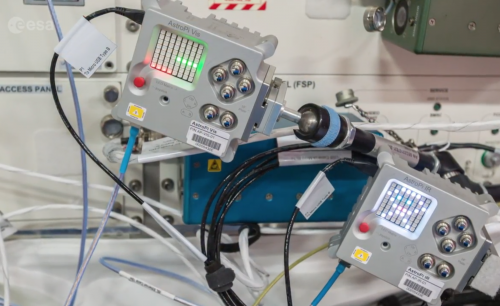
You can choose between two themes for your experiment: Life in space and Life on Earth. If you pick the ‘Life on Earth’ theme, you’ll use the Astro Pi computer Izzy, fitted with a near-infrared camera facing out of an ISS window, to study the Earth. For ‘Life in space’, you’ll use the Astro Pi computer Ed, which is equipped with a camera for light sensing, and investigate life inside the Columbus module of the ISS. The best experiments will be deployed on the ISS, and you’ll have the opportunity to analyse your experimental data to write a report with your results. The ten teams who send us the best reports will become the Astro Pi Mission Space Lab 2018/2019 winners!
There are four phases to Mission Space Lab:
In the first phase, Design, you just need an idea for an experiment. You won’t need to do any coding yet, but you should think about how you might write the program for your experiment to make sure your goal is achievable. Have a look at our Astro Pi Mission Space Lab guidelines for everything you need to know to take part the challenge. Your deadline to register and submit your idea via the Astro Pi website is 29 October 2018.
We will select teams and notify them of their acceptance to Phase 2 of Mission Space Lab by mid-November 2018.
Mission Zero, the simpler level of the Astro Pi Challenge, also offers you the chance to have something you’ve coded run on the ISS, in the form of a simple program that displays a message to the astronauts on-board. For this mission, you don’t need special equipment and you can be a complete beginner at coding; if your entry follows a few simple rules, it’s guaranteed to run in space!
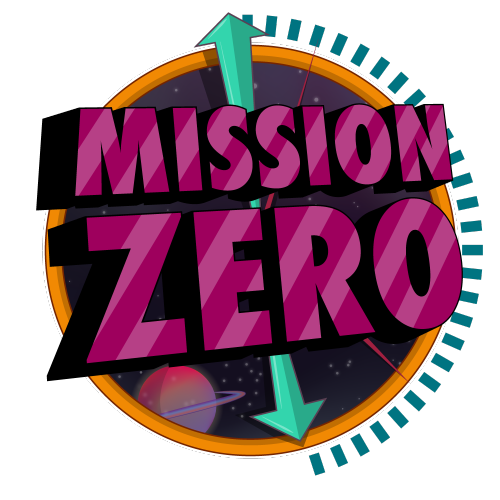
If you are 14 or younger and live in an ESA Member or Associate Member State*, we would like you to take part in Mission Zero. You can submit your program from 29 October 2018 onward. For more details, head to the Mission Zero page.
What is Astro Pi?!
Announcing the 2018-19 European Astro Pi challenge in partnership with the European Space Agency (ESA). It’s open to students from all 22 ESA member countries, including associate members Canada and Slovenia. In Mission Zero, students aged up to 14 write a simple Python program that will display a message on the International Space Station for 30 seconds.
*ESA Member States in 2018:
Austria, Belgium, Czech Republic, Denmark, Estonia, Finland, France, Germany, Greece, Hungary, Ireland, Italy, Luxembourg, the Netherlands, Norway, Poland, Portugal, Romania, Spain, Sweden, Switzerland, United Kingdom.
ESA Associate States in 2018: Canada, Slovenia
In the framework of the current collaboration agreement between ESA and the Republic of Malta, teams from Malta can also participate in the European Astro Pi Challenge. ESA will also accept entries from primary or secondary schools located outside an ESA Member or Associate State only if such schools are officially authorised and/or certified by the official Education authorities of an ESA Member or Associate State (for instance, French school outside Europe officially recognised by the French Ministry of Education or delegated authority).
Website: LINK

Save up to 80% in the Made with GameMaker sale during this week’s Midweek Madness*!
GameMaker Studio 2 is the latest and greatest incarnation of GameMaker! It has everything you need to take your idea from concept to finished game. With no barriers to entry and powerful functionality, GameMaker Studio 2 is the ultimate 2D development environment!
Over 40 games made with GameMaker are on discount during this sale as well as GameMaker Studio 2 at its lowest price ever on Steam! Whether you want to play these amazing games or start making games, check out the deals today!
*Offer ends Friday 10am Pacific Time
 Website: LINK
Website: LINK

Today’s Deal: Save 66% on Endless Space® 2 and 50% on additional content!*
Look for the deals each day on the front page of Steam. Or follow us on twitter or Facebook for instant notifications wherever you are!
*Offer ends September 13th at 10AM Pacific Time Website: LINK
Website: LINK
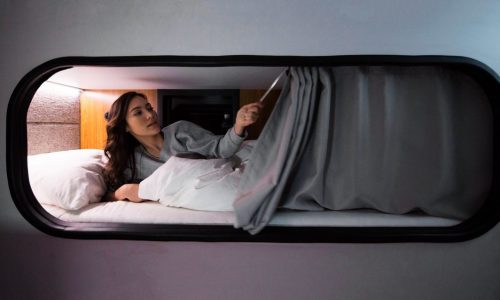
Planes, trains, and automobiles — we all have our preference. And at one company in California, the team is trying to smooth bus travel to broaden commuters’ options for a blissful night’s sleep.

Not everyone wants to fly. While many enjoy the feel of take-off and landing and the high speed at which they can travel from A to B, others see planes as worrisome tin cans of doom, suspended in the air by unreliable magic. I consider myself mostly the former, with a hint of the latter for balance.
In truth, I’d rather catch a train, where the smooth ride sends me into blissful sleep, only occasionally interrupted by a snap of “Damn, did I miss my stop?!”.
But trains are limited to where their tracks lead, which is why so many people still opt to travel by bus. But who can sleep on a bus when the roads are dotted with potholes and cracks? I can’t, and neither can many of the 10000 passengers of the Cabin bus, an overnight service running between Los Angeles and San Francisco.
To address complaints about the road conditions affecting costumers’ sleep, the Cabin team decided to challenge gravity using a Raspberry Pi and the electric motor from a hoverboard in their new venture Cabin Cloud.
Introducing the first active suspension system designed specifically with passenger sleep in mind. Combining patent-pending software and hardware, our technology mutes ‘road turbulence’ and dramatically reduces vibration, so you can get a good night’s sleep while on a moving vehicle.
“We can isolate a passenger’s body, and input frequencies that help people relax and fall asleep,” explains Cabin CTO Tom Currier. “We have a set of sensors that are measuring the acceleration of the vehicle, and also the bed, to compute in real time what we should be cancelling out.”
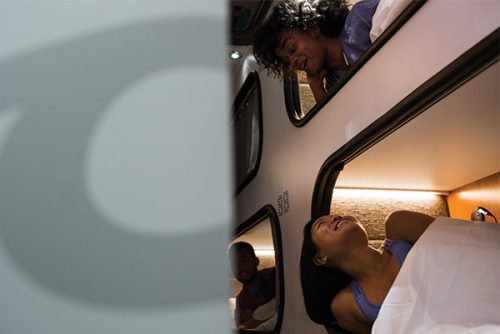
The sensors are accelerometers, two per bed, that measure the bumps from the road and adjust the bed accordingly — up to 1000 times a second. The Cabin Cloud beds only adjust for motion up and down: the team isn’t too concerned about back-and-forth movements due to breaking too hard or turning corners, since Cabin busses predominantly travel on wide, open highways.
Check out this article from Wired for more about the project, and about how similar tech is implemented in trucks for long-haul drivers, and in aeroplanes for turbulence-free travel. You can also sign up for the Cabin Cloud newsletter here.
But the big question about Cabin Cloud is…
Does it have Bluetooth?
Website: LINK

Today’s Deal: Save 50% on Transport Fever!*
Look for the deals each day on the front page of Steam. Or follow us on twitter or Facebook for instant notifications wherever you are!
*Offer ends Wednesday at 10AM Pacific Time Website: LINK
Website: LINK
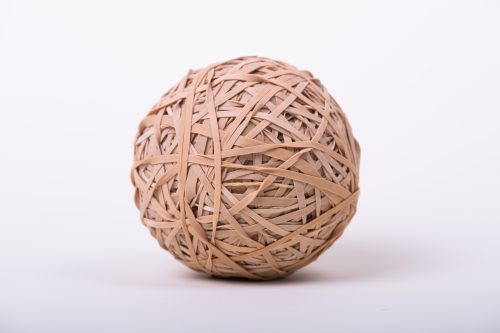
Today marks the four-year anniversary of Nicola Early joining the Raspberry Pi team. Nicola works as Administrator at Pi Towers and is responsible for so many things that I dare not try to list them all. But among all her tasks, the most important one is the care and maintenance of the office rubber band ball.

Every working day for the last four years, whenever the postman delivers the packs of letters, Nicola has had at least one new rubber band to collect. And so over time, the ball has grown and grown and grown.
Nicola is very protective of the ball, so if you come to her desk in search for a rubber band, you’ll have to withstand her glare as she reluctantly removes one from her expanding collection.
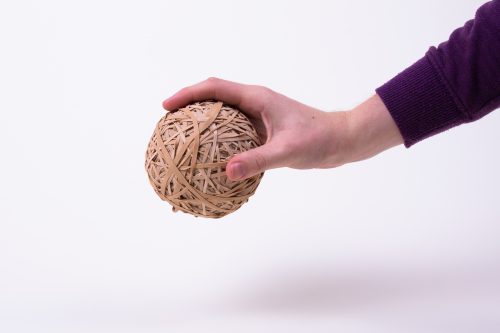
If we are to consider that, in the UK, there are about 261 working days in a year, and Nicola has been working at Pi Towers for four years, it’s fair to estimate the ball consists of at least 1044 bands.
So our question for you is this:
Submit your guess in the comments below*, or in the tweet, Facebook post, or Instagram post for this blog, and the closest guess will win a Raspberry Pi T-shirt and, if we can manage it without her noticing, a band from the very ball in question.

To take part, you need to submit your guess in grams by midnight next Monday 17 September. Multiple guesses on the same platform from the same account will be ignored — so behave.
*Members of the Raspberry Pi team may not take part, as there are scales on Nicola’s desk, and I don’t trust any of you.
Website: LINK

Today’s Deal: Save up to 75% on Borderlands: The Handsome Collection!*
Look for the deals each day on the front page of Steam. Or follow us on twitter or Facebook for instant notifications wherever you are!
*Offer ends Monday at 10AM Pacific Time Website: LINK
Website: LINK
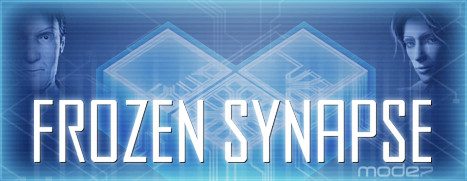
Today’s Deal: Save 75% on Frozen Synapse!*
Look for the deals each day on the front page of Steam. Or follow us on twitter or Facebook for instant notifications wherever you are!
*Offer ends Monday at 10AM Pacific Time Website: LINK
Website: LINK

Today’s Deal: Save 55% on Disgaea 2 PC / 魔界戦記ディスガイア2 PC!*
Look for the deals each day on the front page of Steam. Or follow us on twitter or Facebook for instant notifications wherever you are!
*Offer ends Sunday at 10AM Pacific Time Website: LINK
Website: LINK
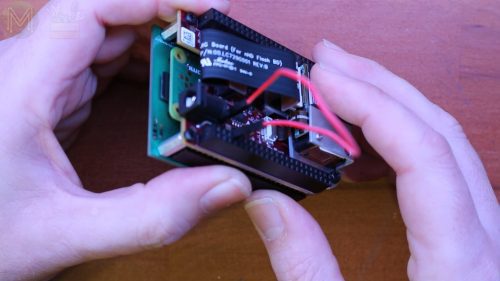
YouTuber MickMake has been working hard on producing a Raspberry Pi pocket projector with the Raspberry Pi Zero W. We’re excited. We know you’re excited. So enough of us talking, here’s Mick with more!
#210 Build a Pi Zero W pocket projector! // Project
2 for 10 PCBs (48 hour quick turn around): https://jlcpcb.com/?ref=mickmake Make a pocket projector based on the DLP2000EVM and Raspberry Pi Zero W! Nice!
YouTuber Novaspirit Tech released a new video yesterday, reviewing MickMake’s Raspberry Pi Zero W pocket projector, and the longer the video ran on, the more we found ourselves wanting our own!
Thank you, Novaspirit Tech, for reminding us to subscribe to MickMake. And thank you, MickMake, for this awesome project!
In his project video, Mick goes into great detail about the tech required for the project, along with information on the PCB he’s created to make it simpler and easier for other makers to build their own version.

The overall build consists of the $10 Raspberry Pi Zero W, a DLP2000 board, and MickMake’s homemade $4 PCB, which allows you to press-fit the projector together into a very tidy unit with the same footprint as a Raspberry Pi 3B+ — perfectly pocket-sized.
While the projected images obviously aren’t as clear as those of high-end projectors, MickMake’s projector is definitely good enough to replace a cheap desktop display, or to help you show off your projects on the go at events such as Raspberry Jams, Coolest Projects, and Maker Faire. And due to its low power consumption, the entire unit can run off the kind of rechargeable battery pack you may already be carrying around for your mobile phone. Nice!

In his review video, NovaSpirit Tech goes through more of the projector’s playback and spec details, and also does a series of clarity tests in various lights. So why read about it when you can watch it? Here you go:
Pi Projector by MickMake | The Raspberry Pi Zero Pocket Projector
this is a small footprint low power consumption raspberry pi zero powered projector using DLP2000 by mickmake ○○○ LINKS ○○○ MickMake PiProjector Video ► https://www.youtube.com/watch?v=XFciR-U7yhc MickMake Channel ► https://youtube.com/mickmake DLP2000 digikey ► https://www.digikey.com/product-detail/en/texas-instruments/DLPDLCR2000EVM/296-47119-ND/7598640 raspberry pi zero ► https://amzn.to/2Q8h1Hz ○○○ SHOP ○○○ Novaspirit Shop ► https://goo.gl/gptPNf Amazon Store ► http://amzn.to/2AYs3dI ○○○ SUPPORT ○○○ patreon ► https://goo.gl/xpgbzB ○○○ SOCIAL ○○○ novaspirit tv ► https://goo.gl/uokXYr twitter ► https://twitter.com/novaspirittech discord chat ► https://discord.gg/v8dAnFV FB Group Novaspirit ► https://www.facebook.com/groups/novas…
We see more and more makers designing their own custom PCBs to make everyone’s life that little bit easier.

If you’ve created a custom PCB for your Raspberry Pi project, feel free to use the comments section as free advertising space for one day only! You’re welcome.
Website: LINK

Today’s Deal: Save 20% on Wizard of Legend!*
Look for the deals each day on the front page of Steam. Or follow us on twitter or Facebook for instant notifications wherever you are!
*Offer ends Sunday at 10AM Pacific Time Website: LINK
Website: LINK
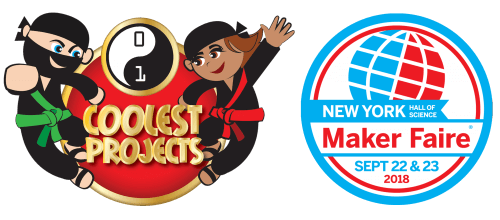
This month sees two wonderful events where you can meet the Raspberry Pi team, both taking place on the weekend of September 22 and 23 in the USA.

And for more impromptu fun, you can also hang out with our Social Media Editor and fellow Pi enthusiasts on the East Coast on September 24–28.
In the Discovery Cube Orange County in Santa Ana, California, team members of the Raspberry Pi Foundation North America, CoderDojo, and Code Club will be celebrating the next generation of young makers at Coolest Projects North America.
Coolest Projects is a world-leading showcase that empowers and inspires the next generation of digital creators, innovators, changemakers, and entrepreneurs. This year, for the first time, we are bringing Coolest Projects to North America for a spectacular event!
While project submissions for the event are now closed, you can still get the last FREE tickets to attend this showcase on Sunday, September 23.
To get your free tickets, click here. And for more information on the event, visit the Coolest Projects North America homepage.
For those on the east side of the continent at World Maker Faire New York, we’ll have representation in the form of Alex, our Social Media Editor.
The East Coast’s largest celebration of invention, creativity, and curiosity showcases the very best of the global Maker Movement. Get immersed in hundreds of projects and multiple stages focused on making for social good, health, technology, electronics, 3D printing & fabrication, food, robotics, art and more!
Alex will be adorned in Raspberry Pi stickers while exploring the cornucopia of incredible projects on show. She’ll be joined by Raspberry Pi’s videographer Brian, and they’ll gather footage of Raspberry Pis being used across the event for videos like this one from last year’s World Maker Faire:
Raspberry Pi Coffee Robot || Mugsy || Maker Faire NY ’17
Labelled ‘the world’s first hackable, customisable, dead simple, robotic coffee maker’, and powered by a Raspberry Pi, Mugsy allows you to take control of every aspect of the coffee-making process: from grind size and water temperature, to brew and bloom time.
So if you’re planning to attend World Maker Faire, either as a registered exhibitor or an attendee showing off your most recent project, we want to know! Share your project in the comments so we can find you at the event.
Lastly, since she’ll be in New York, Alex will be out and about after MFNY, meeting up with members of the Raspberry Pi community. If you’d be game for a Raspberry Pi-cnic in Central Park, Coffee and Pi in a cafe, or any other semi-impromptu meetup in the city, let us know the best days for you between Monday, September 24 to Thursday, September 27! Alex will organise some fun gatherings in the Big Apple.
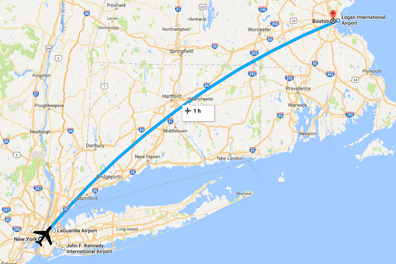
You can also join her in Boston, Massachusetts, on Friday, September 28, where Alex will again be looking to meet up with makers and Pi enthusiasts — let us know if you’re game!
Does anyone else think it’s weird that I’ve been referring to myself in the third person throughout this post?

Website: LINK